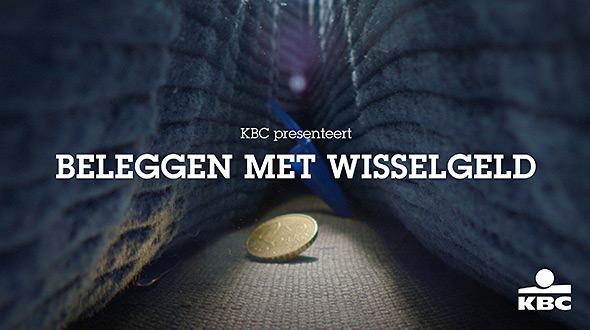1. MARKET SITUATION
Belgians are known to be very risk averse people. They prefer security above all else and like to know what they're in for beforehand. This need for security also plays a big role when it comes to making financial decisions.
Belgians like their money where they can see it, either on their bank account or in bricks. This has made them one of the most avid savers in the world with a record high of 281 billion euro parked on Belgian savings accounts (NBB, 2020). Per household, this equals a saving rate of almost 12% while the European average is 10% (Eurostat, 2018). This also impacts Belgians' investing behavior, resulting in only 1 out of 3 Belgians actively investing their money (Spaargids.be, 2017).
For KBC this is a fundamental problem. Being able to activate savings is crucial for the bank because of profitability. Especially in times of a historically low interest rate, where banks don't earn any money on these savings instead it costs them. Clients who actively invest - instead of only saving - are proven to be more profitable. Likewise, investors are proven to be more bank-insurance stable than savers. This means that through investing, the bank is able to secure capital over a longer period of time and is able to build more profitable long-term relationships.
But in order to achieve this profitability, banks first have to succeed at turning more clients into investors. Despite countless incentives and communication efforts, there is still a general bad perception surrounding investing. Resulting in a lot of misguided beliefs. Recent research by Profacts (2019) shows that the perceived lack of capital is the number one reason for consumers not to invest, amplifying the belief that investing is only for the few. Followed by the fear of losing money, amplifying the belief that investing equals taking big risks. And thirdly having insufficient knowledge, feeding the belief you need to be an expert in order to invest. All of which form barriers that keep people from investing.
So how can KBC break this status quo and convert more clients into investors while at the same time building more profitable long-term relationships? |









 Valérie a commencé sa carrière par une formation à la KULeuven en tant qu'économiste d'entreprise. Elle a fait ses premiers pas sur le marché du travail avec des fonctions de communication au sein de Sega et Motorola.
Valérie a commencé sa carrière par une formation à la KULeuven en tant qu'économiste d'entreprise. Elle a fait ses premiers pas sur le marché du travail avec des fonctions de communication au sein de Sega et Motorola. Stéphanie a suivi une formation d'ingénieur commercial aux Universités de Namur et de Louvain. Elle a complété ses études par un Master à l'école de commerce ESADE de Barcelone. Sa carrière a débuté chez Roland Berger Strategy Consultants, où elle s'est passionnée pour la résolution de défis commerciaux pour un large éventail de clients.
Stéphanie a suivi une formation d'ingénieur commercial aux Universités de Namur et de Louvain. Elle a complété ses études par un Master à l'école de commerce ESADE de Barcelone. Sa carrière a débuté chez Roland Berger Strategy Consultants, où elle s'est passionnée pour la résolution de défis commerciaux pour un large éventail de clients.